| Botanical Name |
Crassula pellucida ssp. pellucida |
| Family |
Crassulaceae - The crassula family. |
| Pronunciation |
KRASS-yoo-la pel-LOO-sid-a |
| Common Name(s) |
IsiXhosa: inyamayamakhwenkwe
|
| Plant Group |
- Ground Cover A plant with a low-growing, spreading habit, grown specifically to cover the ground.
- Succulent A plant having fleshy stems or leaves often adapted to dry conditions.
|
| Plant Size |
- Very Small
| Tree | 3m to 4m |
| Shrub | 25cm to 50cm |
| Perennial/ground cover | Up to 10cm |
| Bulb | 10cm to 20cm |
| Succulent | Up to 5cm |
|
| Position |
- Canopy Shade Canopy shade is found below closely grown trees where some light filters through. Ideal for the protection of herbaceous plants.
- Dry Shade Shady areas where soil has poor water retention or are dependent on rain for their moisture needs.
- Light or Dappled Shade Found below trees with sparse, open foliage. Ideal for the protection of herbaceous plants.
- Partial Shade The area is in shade for part of the day and in full sun for part of the day.
- Sun The area is in full sun for all or most of the day, all year round.
|
| General Information |
- Drought Tolerance: Moderate The plant is moderately adapted to arid conditions and can survive short periods of drought and high temperatures without extra water.
- Evergreen Plants that have leaves all year round.
- Frost: Tender A plant that will not survive any frost or low winter temperatures.
- Water Wise Plant species originating from low rainfall regions that require less water to survive and thrive than other plant species.
|
| Specific Information |
Crassua pellucida is a compact, neat ground cover that has a wide range of uses. It performs abundantly when granted a little shade each day and will also grow well in full sun. Stems are fragile but root readily. Leaf colour and growth habit will differ, according to variations in the amount of light and water, soil fertility and habitat. Other than a splash of water every now and then, this succulent ground cover requires little maintenance.
|
| Ad Break |
|
| Flowers |
| Description |
|
| Season |
- Spring Plants will seldom bloom for the entire season as given in the list, but should flower during a period within these parameters.
|
| Colour |
|
| Growth Rate |
- Very Fast Specifying growth rate can be very misleading as there is considerable variation of growth rate depending on type and species of plant, available water, supplementary feeding, mulching and general care, as well as the plants suitability and adaptability to the garden environment.
|
| Plant Uses |
- Container Trees, shrubs and ornamental species that can adapt to growing in a restricted environment.
- Filler Either a fast growing tree or shrub used temporarily to fill in an area while the permanent plants grow to a desired size, or a plant used to fill gaps in borders or beds.
- Ground Cover Low-lying plants that spread fast, require minimal maintenance, and cover large expanses or bare areas between bulbs or shrubs. They provide protection from erosion and drought and improve the visual appearance of the garden.
- Interplanting Arranging and planting plants in the garden that have different blooming times and habits of growth, extending the amount of time in which the area is in flower.
- Pot Plant A plant that needs a protected environment on a patio or indoors.
- Rock Garden An area constructed of larger rocks, arranged naturally, to emphasise the use of stones as a main element. Generally plants used do not need a lot of care.
- Stabilize Banks Plant is used to prevent soil erosion because their roots will form a mat that stabilizes the soil and keeps it from washing away in heavy rains.
- Suitable for coastal gardens Plants adapted to dry, sandy soil, forceful wind, limited rainfall and intense sunlight.
- Suitable for smaller gardens Such plants do not have invasive root systems, remain small or controllable and can often be grown in containers.
- Water Features These plants may have dramatic, lush foliage or graceful form. They do not shed excessive leaves and do not have invasive root systems.
|
| Distribution and Habitat |
endemic to the Western and Eastern Cape provinces, in thicket vegetation, damp ravines and on rocky cliffs
|
| Planting Suggestions |
Plant Crassula pellucida in full sun or a lightly or partially shaded position in normal, well-drained garden soil. Mix in a little compost if the soil is a bit heavy or very depleted. Water well on planting then water only when the ground is almost dry. After two or three weeks, when the plants show signs of new growth, reduce watering to an occasional sprinkle. This will encourage strong stems and dense growth. As with many ground hugging crassulas, the plant may deteriorate after flowering so this is a good time to remove bedraggled parts of the plant and replant fresh shoots. Plants will suffer from rust or rotting if drainage is poor, so clay soils are not suitable.
|
| Lorraine's Garden Notes |
I have noticed that post flowering deterioration can be severe in plants in full sun with arid conditions, while those grown indoors or in shade with a judicious water supply, will show little or no decline.
|
| Medicinal Uses |
|
| Ad Break |
|


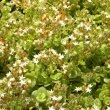
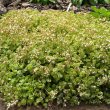
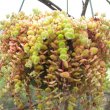
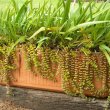
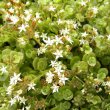
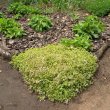


Discuss this plant
Share knowledge, ask a question or give an experience.